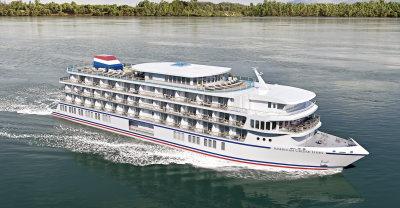A long-promised shore power connection is up and running at New York City’s Brooklyn Cruise Terminal, a major step toward reducing air pollution from port facilities.
Connecting to the Con Edison power grid will allow cruise ships to run their onboard systems without using generators — an arrangement that will eliminate a calculated 1,500 tons of carbon dioxide, 95 tons of nitrous oxide and 6.5 tons of particulate matter annually, according to the New York City Economic Development Corporation that operates the terminal.
“After years of staunch advocacy by local residents and elected officials, shore power is up and running at the Brooklyn Cruise Terminal,” Maria Torres-Springer, president of the EDC, said in announcing the start. “The system will allow ships to cut harmful fuel emissions while at port and drastically improve health and quality of life in the surrounding community.”
In 2010 the Port Authority of NY/NJ estimated that improvement to air quality could yield public health benefits of $99 million over 15 years. That was a key element in community groups around the terminal’s Red Hook neighborhood pushing for shore power.
Beyond the infrastructure cost, the project was delayed by haggling over the price of power — in an era where cheap fuel prices made shipboard generation more economical. The costs are subsidized in part by the EDC and the New York Power Authority, with terminal user Carnival Cruise Line picking up the rest.
Brooklyn is only the second Atlantic coast cruise terminal after Halifax, Nova Scotia, to install shore power. Costs are about $10 million to service one slip, and involve substantial infrastructure improvements. Ship operators must spend around $1 million to make a vessel shore power ready, according to a study issued in August by Massport in Boston.
California is pushing to have shore power and equivalent emission reductions for 90% of ships in its ports by 2020, but as yet there are no East Coast shore power terminals for container vessels.
Demand on the energy grid is substantial too. A typical container ship in port uses about as much energy as a single terminal at Boston’s Logan Airport, while the cruise ship Queen Mary 2 requires 13 megawatts, equal to the entire airport, MassPort planners noted. That liner will be the first paying power customer when it docks at Brooklyn Saturday, EDC officials said.





